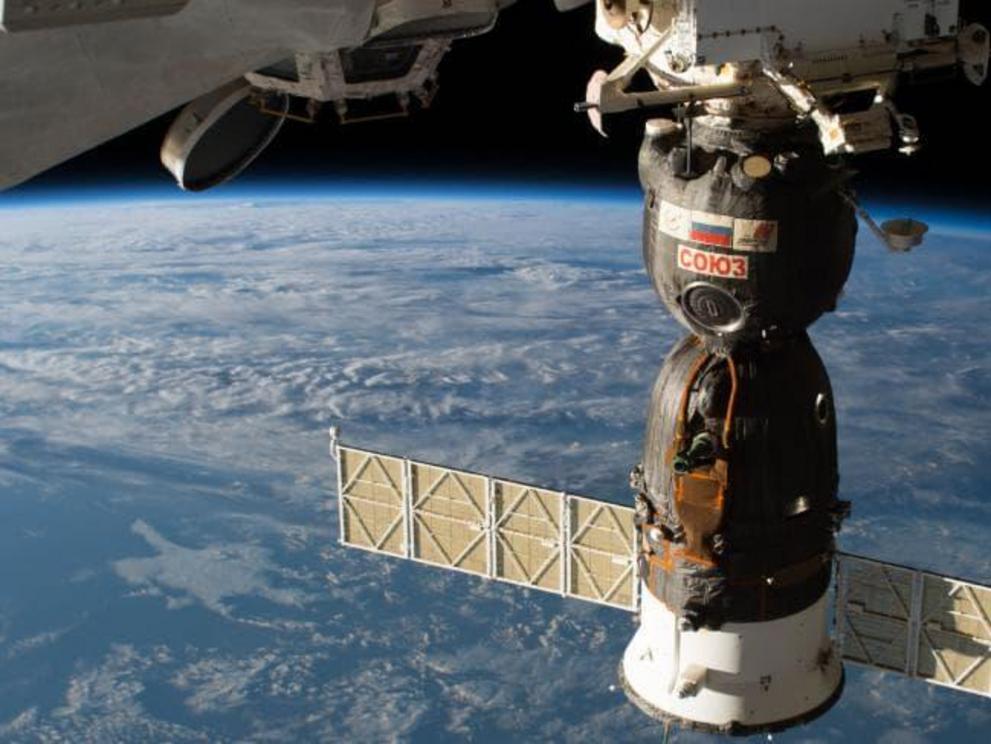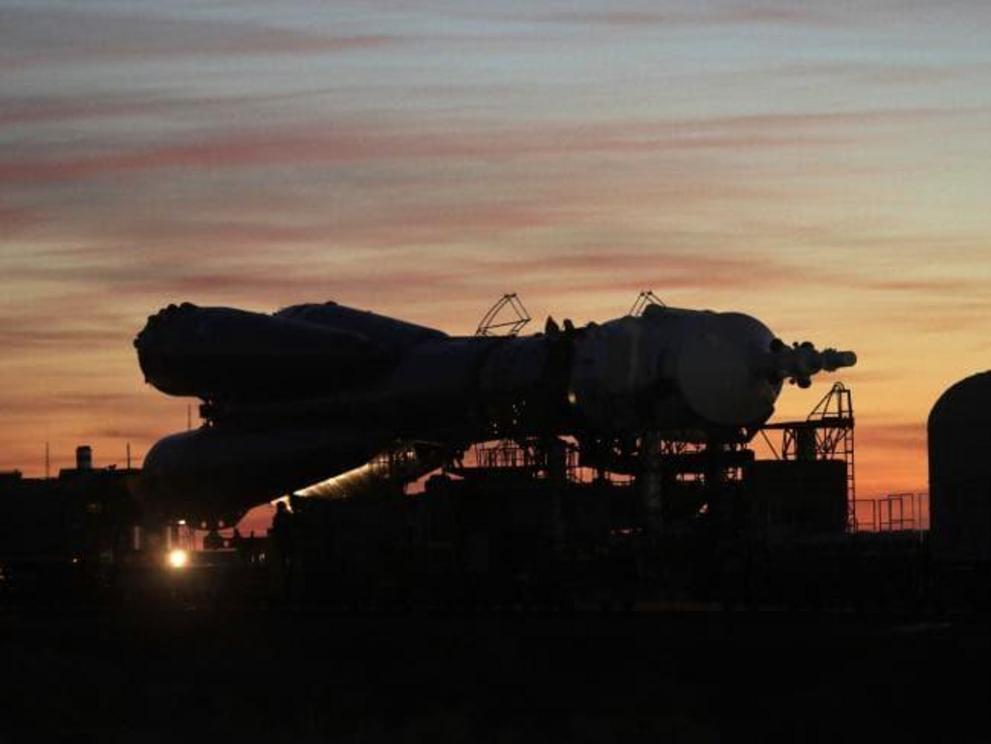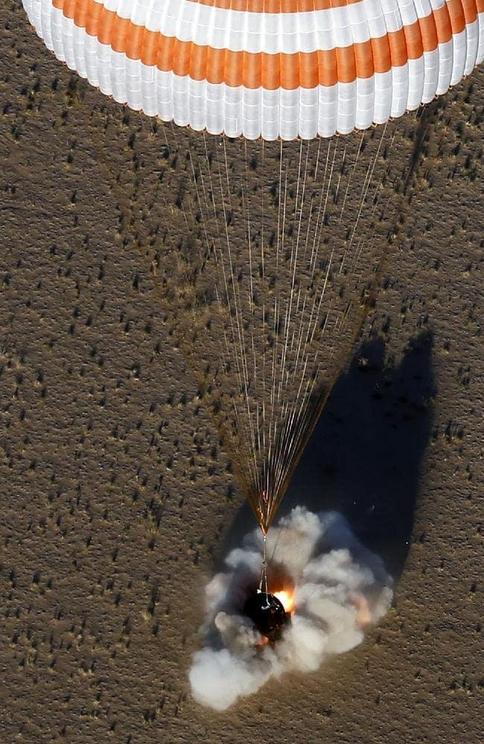International Space Station astronauts could end up ‘marooned’
A RELIEF flight just failed. Their ride home has a hole in it. Now the three astronauts aboard the International Space Station are facing an uncertain future.
THEY’RE not exactly marooned. But they’re not far from it. The three astronauts aboard the International Space Station watched as as a relief crew ejected from their failed booster rocket last week. Suddenly, the suspicious hole in their escape ship is now looking a whole lot more ominous.
German ISS Commander Alexander Gerst along with Russian Sergey Prokopyev and American Serena Aunon-Chancellor were due to return to Earth in December.
Now, they’re not so sure.
NASA, however, is trying to be upbeat.
“Talked to the crew ... they’re doing great,” the deputy astronaut chief, Reid Wiseman, said late last week. “Everybody is in good spirits. They’re ready to serve at the will of the program. They will stay up there as long as we need them to.”
Exactly how long that will be is unknown.
The issue is … up in the air.
They have stocks of food and air sufficient for several more months.
And there are two US and one Japanese cargo-carrying modules about to be boosted into orbit.
The problem is the availability — or lack thereof — of a capsule capable of carrying them back through the atmosphere to terra firma.
 A Russian Soyuz orbital module (bottom component) and re-entry vehicle (top circular module) is seen here attached to the International Space Station.
A Russian Soyuz orbital module (bottom component) and re-entry vehicle (top circular module) is seen here attached to the International Space Station.
LEAKY LIFEBOAT
The Russian Soyuz rocket program has been grounded after a ‘serious anomaly’ caused the emergency ejection of the two astronauts it was carrying up to the ISS.
Both safely made it back to Earth. But those already up there may have to wait for another ride to be approved.
“We’ll have to see where the data leads them,” ISS mission operations integration manager Kenny Todd said. “And if that’s a month, or if it’s two months, or six — I really can’t speculate on the length of it.”
But NASA and Roscosmos are also worried about the condition of the Soyuz module currently docked with the space station as ‘lifeboats’.
One has a use-by-date which expires in January. Its components are only rated for a 200-day stint in space. After that, seals and soft components could begin to perish.
But there’s another, small, problem.
Trust.
An amateur attempt had been made to plug it — and conceal it. But the simple glue used to fill the hole became brittle and crumbled into the void — causing a small but detectable leak of the space stations atmosphere back in August.
A search by the crew found the hole.
It was quickly patched up.
But the recriminations have been ongoing, with Russia going so far as to suggest one of the NASA astronauts could have sabotaged the vessel.
Speculation aside, the exact extent of the drill’s damage to the attached Soyuz has not been determined by a spacewalk. Has it pierced or cracked the vital heat shield of the adjoining landing module?
Even a minuscule imperfection could be a matter of life and death for those inside the Soyuz as it slams back into the atmosphere as a superheated fireball.
 The Russia's Soyuz-FG booster rocket with the Soyuz MS-10 space capsule that was forced to make an emergency ejection last week.
The Russia's Soyuz-FG booster rocket with the Soyuz MS-10 space capsule that was forced to make an emergency ejection last week.
ESCAPE OPTIONS
If NASA and Roscosmos are not fully confident the Soyuz capsule is safe, it could be ejected from the station to free up its docking port.
Another capsule would have to be prepped, and launched.
But it would be at least 200 days before this can happen - possibly longer given the investigation into the recent launch failure.
The Soyuz program is troubled. There have been two recent launch failures, raising questions about slipping standards of quality control.
“The vehicle that’s going to bring up a replacement crew is moving through its normal development process,” Todd says. “Our Russian colleagues would choose how best to handle that situation, and that’s all still T.B.D. (to be determined)”.
NASA has already indicated it would prefer to keep the crew on the station - even without a reliable ‘lifeboat’.
But it only has a part-say.
The United States has not been able to launch or recover humans from orbit since the final flight of the space shuttle program in July 2011. And the private firms — such as SpaceX and Boeing — which are supposed to be building new manned modules keep slipping behind schedules.
So it must rely on the Russians.
The only other nation capable of putting people in space is China. And the US refuses to work with their space agency.
Ironically, with the grounding of the Soyuz fleet, China is now the only nation with an operational manned spaceflight program. And its docking system is compatible with the ISS.
 The Soyuz MS-08 space capsule carrying International Space Station (ISS) astronauts lands in a remote area outside the town of Dzhezkazgan (Zhezkazgan), Kazakhstan, on October 4, 2018.
The Soyuz MS-08 space capsule carrying International Space Station (ISS) astronauts lands in a remote area outside the town of Dzhezkazgan (Zhezkazgan), Kazakhstan, on October 4, 2018.
ABANDON SHIP?
If the three astronauts do attempt a re-entry in a suspect Soyuz, the ISS itself will find itself empty for the first time in 18 years.
NASA says there are steps in place to remote-control the station from the ground.
But many of the experiments would have to be abandoned. Two spacewalks planned for later this month have already been put off indefinitely.
“That’s something that we’re always prepared for,” Todd said. “I feel very confident that we could fly for a significant period of time.”
”If the pumps do their job, and all the other systems — the solar arrays continue to rotate, and we keep the batteries charged — there’s nothing that says we can’t continue to just bore holes in the sky and do a minimal amount of commanding.”
But, if something goes wrong — and it usually does — the space station could find itself in peril. The $150 billion project could begin to slip out of orbit, and spiral towards the ground.
Todd, however, remained upbeat: “We can tolerate some failures, some significant failures, and continue to operate the station in a de-crewed manner”.
Video can be accessed at source link below.
